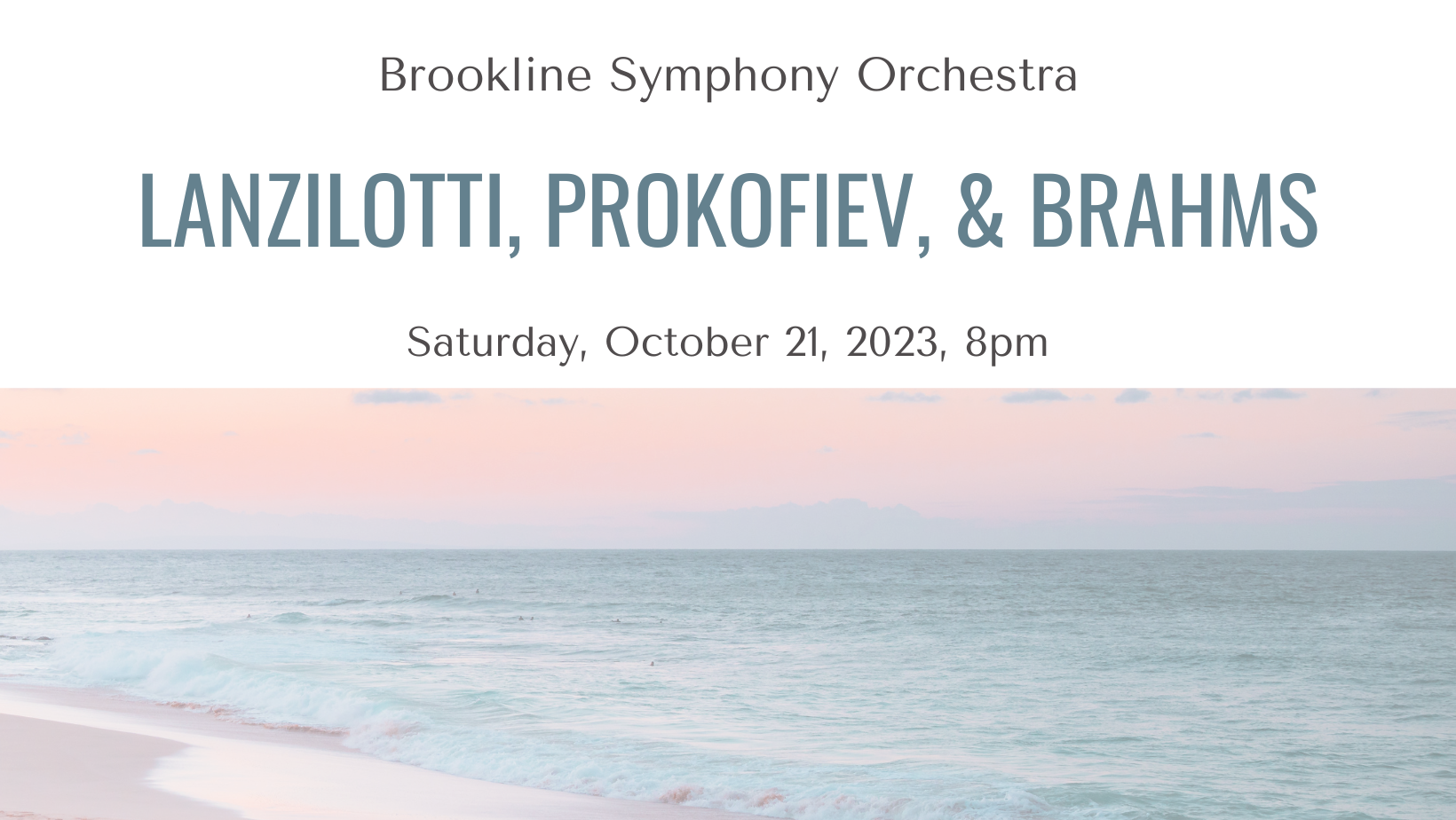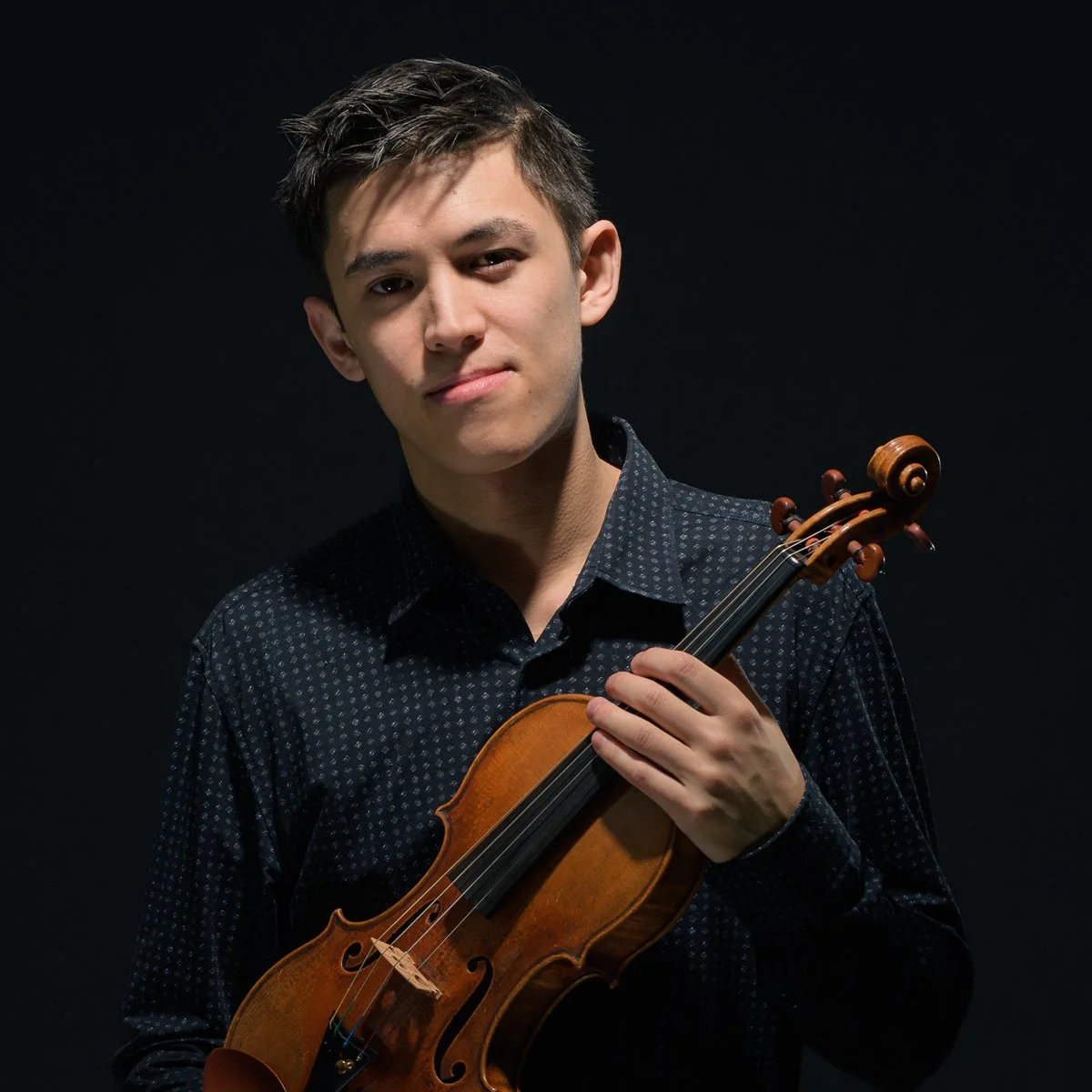Lanzilotti, Prokofiev, & Brahms
Saturday, October 21, 2023, 8pm
All Saints Parish
1773 Beacon Street, Brookline, MA 02445
Tickets are $20 online or $25 at the door for general admission, $15 for seniors, $10 for students, and free for children 12 & under.
COVID Policy: You do not need to show proof of vaccination or a negative test result to enter All Saints Parish. To ensure the safety of everyone, the members of Brookline Symphony Orchestra are fully vaccinated and we strongly recommend our audience members to wear a mask. Please stay home if you are sick or have COVID-19 symptoms; you have been directed to self-isolate or quarantine; or you are awaiting the results of a COVID-19 test. Note: These policies are subject to change as the COVID-19 pandemic and community transmission rates evolve.
Leilehua Lanzilotti, koʻu inoa
Leilehua Lanzilotti is a Kanaka Maoli (Native Hawaiian) composer / sound artist, exploring radical indigenous contemporaneity by integrating community engagement and ways of knowing into the heart of projects. Lanzilotti studied at Oberlin Conservatory of Music, Yale School of Music, and Manhattan School of Music. In addition, Lanzilotti was an orchestral fellow in the Rundfunk-Sinfonieorchester Berlin and the New World Symphony.
Lanzilotti was a finalist for the 2022 Pulitzer Prize in Music for with eyes the color of time (string orchestra), which the Pulitzer committee called, “a vibrant composition . . . that distinctly combines experimental string textures and episodes of melting lyricism.”
koʻu inoa translates from ʻōlelo Hawaiʻi to "my name is" and frames a perspective and statement to absorb the meaning of identity. Melody is the most substantial element to impart musical distinction and identity. A succession of pitches is the equivalent of letters to a name. Even when the rhythm is altered, the original melody lingers and is recognizable. This connection between pitch, melody, time, and personal identity is one of many metaphors at the heart of this music.
…For five minutes, koʻu inoa invites us to listen on three planes: to listen closely (focus on immediate changes), listen broadly (connect changes over time), and listen metaphorically (distill meaning from sound). If there is an allegory in music, this is a well-spring; Lanzilotti offers the awakened Hawaiian consciousness, a journey of one distantly far from home but connected with resounding clarity.
Hawaiʻi Aloha, usually performed at the end of concerts, offers the audience a parting gesture of farewell to sing as one, to be a community connected. When koʻu inoa is performed as a concert opener, the anthem becomes a welcoming gesture rooted in the Kanaka Maoli protocols of first contact; to introduce who you are. The world premiere of the orchestral koʻu inoa is Lanzilotti's debut with the Hawaiʻi Symphony Orchestra, an introduction for the composer, and a warm musical broth to alleviate homesickness. As listeners, the invitation stands to meditate on our identity, discover meaning in the melody of our name, and feel rooted and connected to the place we call home.
— Excerpted from program notes by Dr. Michael-Thomas Foumai, Lecturer, Academy of Creative Media, University of Hawaiʻi West Oʻahu, originally written for the orchestral premiere of koʻu inoa, April 2022
Sergei Prokofiev, Violin Concerto No. 2
featuring concerto competition winner David Bernat
Sergei Sergeyevich Prokofiev was a Russian composer, pianist, and conductor; he is regarded as one of the major composers of the 20th century. His works include such widely heard pieces as the March from The Love for Three Oranges, the suite Lieutenant Kijé, the ballet Romeo and Juliet, and Peter and the Wolf. Of the established forms and genres in which he worked, he created seven completed operas, seven symphonies, eight ballets, five piano concertos, two violin concertos, a cello concerto, a symphony-concerto for cello and orchestra, and nine completed piano sonatas.
Violin Concerto No. 2in G minor, Op. 63 was composed shortly after Prokofiev returned to Russia after fifteen years abroad. He had left his country after the 1917 Revolution and had found much success as a performer and composer, gaining the acceptance he had lacked in his earlier more experimental years. The concerto was commissioned by the French violinist Robert Soetens, who then performed the work many times throughout the world.
Violinist David Bernat is currently a C.V. Starr Doctoral Fellow at the Juilliard School where he studies with Joseph Lin, and a member of Carnegie Hall's Ensemble Connect. For the past three seasons, he has been an Artist in Residence at the Music at the Farm recital series, also serving as artistic director of the Grace Note Farm Music Festival. As soloist, David has performed concertos with the Ft. Dodge Symphony and Waterloo-Cedar Falls Symphony and is the 3rd Prize winner of the 2020 World Bach Competition hosted by the Boulder Bach Festival. This past summer, David was a participant at the Marlboro Music Festival, and previously was a New Fromm Player at Tanglewood, a fellow at the Bowdoin International Music Festival, and has attended the Music Mountain Chamber Music Masterclasses, and Moritzburg Festival Academy.
Johannes Brahms, Symphony No. 2
Johannes Brahms was a German composer and pianist of the Romantic period. Brahms is both a traditionalist and an innovator; his music is firmly rooted in the structures and compositional techniques of the Classical masters. His reputation and status as a composer are such that he is sometimes grouped with Johann Sebastian Bach and Ludwig van Beethoven as one of the "Three Bs" of music.
Brahms wrote Symphony No. 2 while in Pörtschach, a tiny Austrian village on Lake Wörth. The D-Major Symphony seems to reflect the composer’s relaxed state of mind during the happy summer. The lyrical character of the work—sometimes referred to as Brahms’s “Pörtschach” or “Pastoral” Symphony—certainly is in marked contrast to the storm and stress that pervades his First Symphony.
Brahms referred to his Second Symphony as a “charming new monster” and, in typically self-deprecating fashion, told his friend, Elisabeth von Herzogenberg, that it was merely a little Sinfonia. The Symphony No. 2 is in four movements. The first (Allegro non troppo) opens with the cellos and basses intoning a three-note motif that will return in various guises throughout the Symphony. The movement also includes a waltz-like theme that recalls the composer’s beloved “Lullaby,” Opus 49, No. 4. The slow-tempo second movement (Adagio non troppo) alternates lyrical repose with moments of tension, not resolved until the final bars. The third movement (Allegretto grazioso) opens with the oboe’s presentation of the sprightly principal melody that returns throughout, alternating with fleet interludes. The concluding movement (Allegro con spirito), the most cheerful finale among Brahms’s Four Symphonies, radiates energy and optimism from start to finish.


